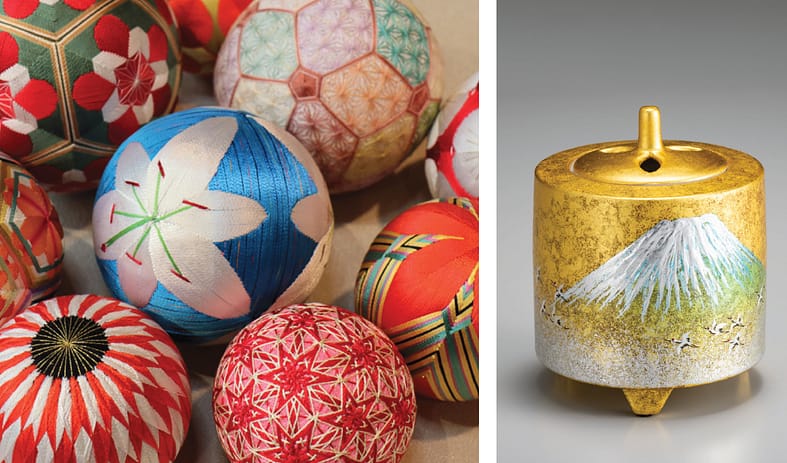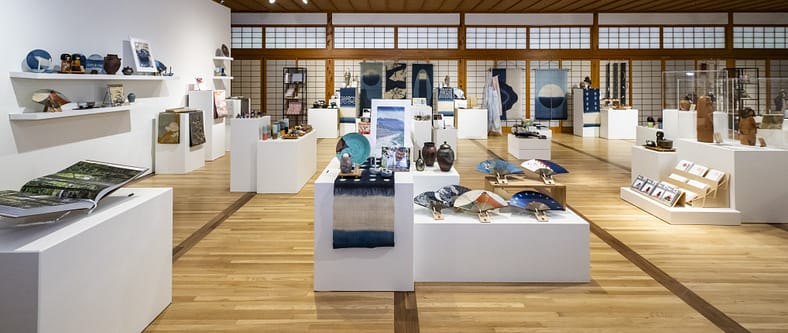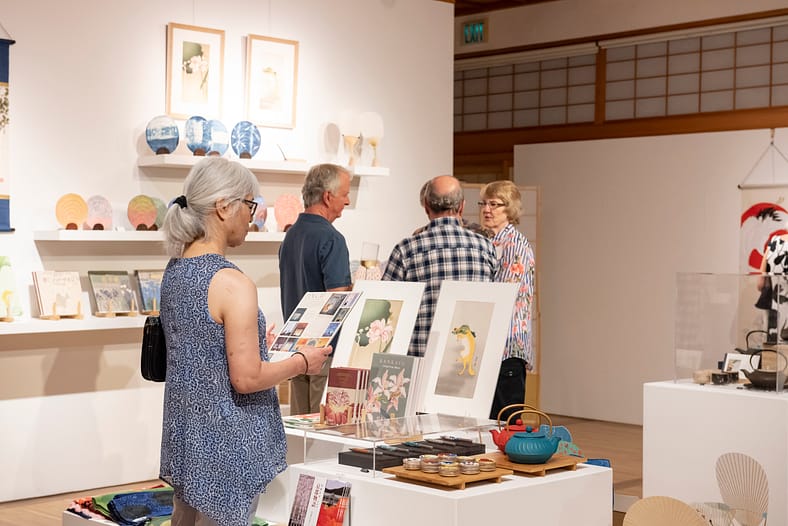
Annual Summer Marketplace Brings the Art of Craft to Portland from Kanazawa, Tokyo, and More
For more than a decade, Behind the Shoji has been one of Portland Japanese Garden’s most anticipated summer traditions. An annual show and sale of Japanese and Japanese-inspired wares, visitors can peruse and purchase from a variety of curated items that, even with a trip to Japan, might be difficult to come across. What makes this elevated and distinctive shopping experience stand out is the amount of time that goes into establishing relationships with craftspeople and vendors in communities across Japan and the careful research into making sure visitors to the Garden are indeed perusing goods that are authentically Japanese in their makeup and design.
Guests to Shoji this year will see a range of different goods and wares including some captivating new items. Director of Buying and Merchandising Ashley McQuade is particularly excited to share goods featuring kinpaku, or gold leaf, from Kanazawa. Gold leaf has been an art form practiced in the coastal city since as early as the sixteenth century— Kanazawa literally translates to “marsh of gold.” Today, the vast majority of Japan’s kinpaku comes from here, which has been utilized for things as small as hand-fans and as massive as Kinkaku-ji, Kyoto’s famous Golden Pavilion. Among the items available for sale will be incense holders, jewelry, and glass vases that showcase this stunning aesthetic.

For those interested in adding a bright pop of color to their home, a new item available this year will be temari, or handballs. Temari were introduced to Japan from China around the seventh century—they are cotton ball intricately hand-wrapped in threads. These delightful and lesser known Japanese crafts are from Kaga Temari Mariya in Kanazawa. They are reflective of a style that originated in Japan’s Edo era (1603-1868) and are customarily given to daughters ahead of their wedding to wish them a long and happy marriage.
The temari, incense containers, and many other goods certainly make Behind the Shoji a shopping experience, but the motivation behind offering it ties directly into Portland Japanese Garden’s goals of introducing authentic aspects of Japan to an unfamiliar audience. “I think it speaks to how we’re more than a garden,” McQuade offered. “We’re also a cultural organization, and this marketplace offers a tangible connection to Japanese culture.”
How the Unique Wares of Behind the Shoji are Curated

“I make annual visits to Japan,” shares McQuade. “I always attend the Tokyo International Gift Show, which is a large trade show that gathers thousands of gift and home decor vendors. It has been gratifying and humbling to learn that Portland Japanese Garden is becoming a well-known and admired organization in Japan’s community of craftspeople at this show, to the point that our arrival is anticipated every year. I think it’s due to the many years we have put into building relationships with people there—it helps encourage some artists who might be reluctant to partner with an American institution to work with us. Knowing that we are fostering friendships makes us want to work even harder to maintain this mutual trust and admiration.”
“In addition to the Gift Show, I also make sure to visit new regions each year to meet with craftspeople and the galleries and shops that offer their wares so every Behind the Shoji can be a fresh experience,” McQuade continues. “Including Tokyo, I spent about 10 days visiting dozens of shops and artist studios in Toyama, Takaoka, and Kanazawa. Kanazawa, in particular, is an important arts destination in Japan, joining Kyoto as a must-visit destination for those interested in the nation’s craftsmanship and design. It’s incredibly rewarding to connect with independent craftspeople in Toyama and Kanazawa and throughout Japan— we help keep interest in their work alive and support their livelihoods and simultaneously can offer our guests another avenue into understanding Japanese culture through art and design.”
What Does “Japanese-Inspired” Mean?

While some of the items at Behind the Shoji can claim Japanese provenance, others are referred to as “Japanese-inspired.” This is because while they be made in the United States or elsewhere, they are items that reflect Japanese aesthetics and culture. McQuade uses her decade-plus of work for the Garden plus her earlier professional history as an architect that incorporated knowledge of Japanese design principles to make sure the items for sale don’t run askew of the Garden’s standards of authenticity.